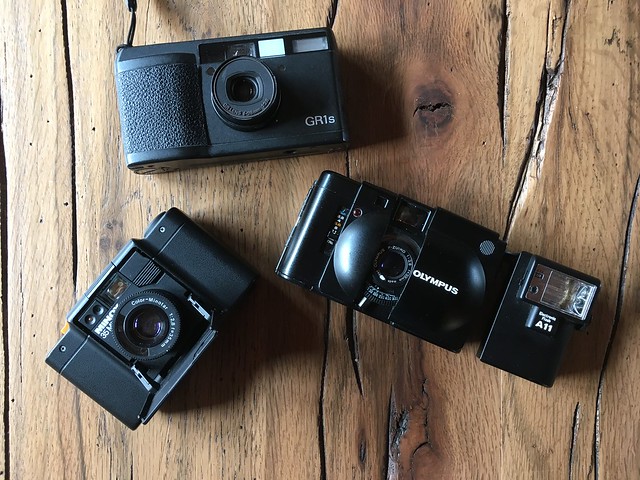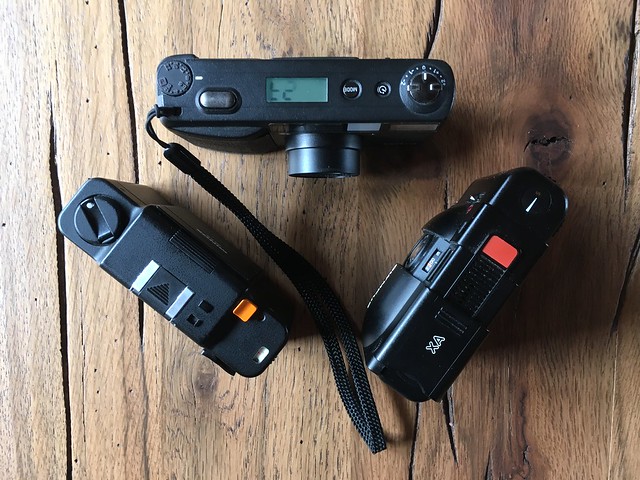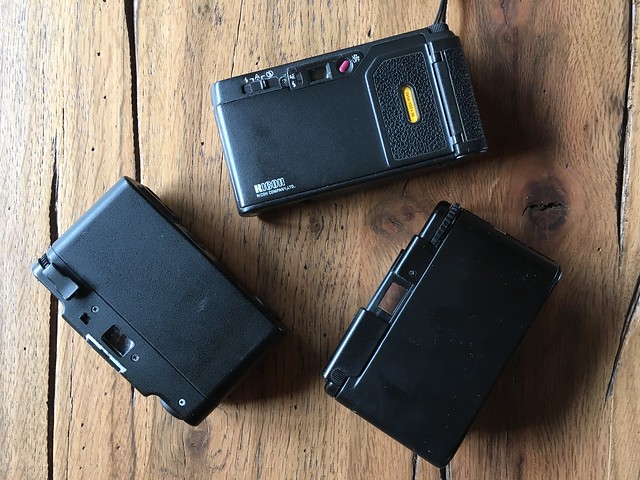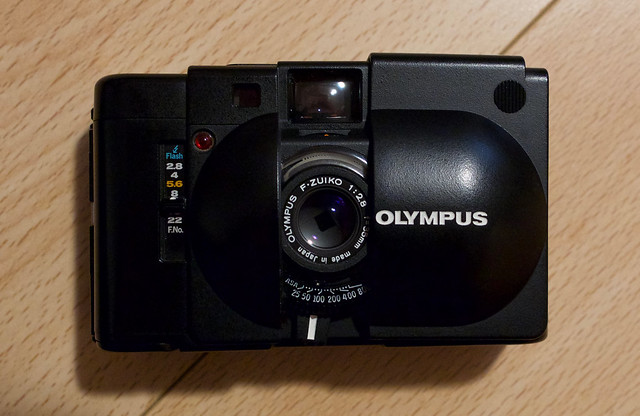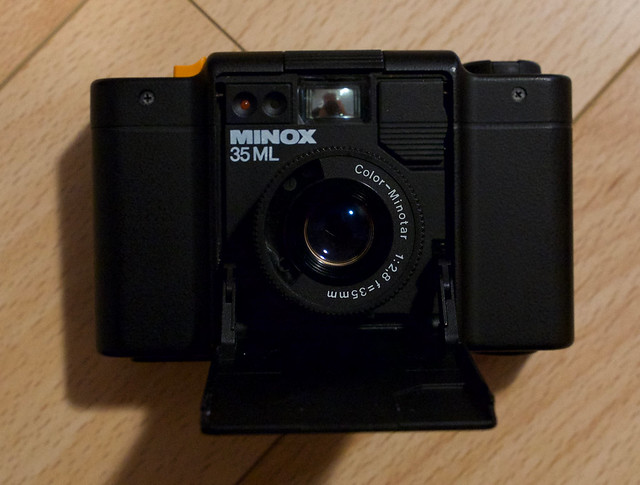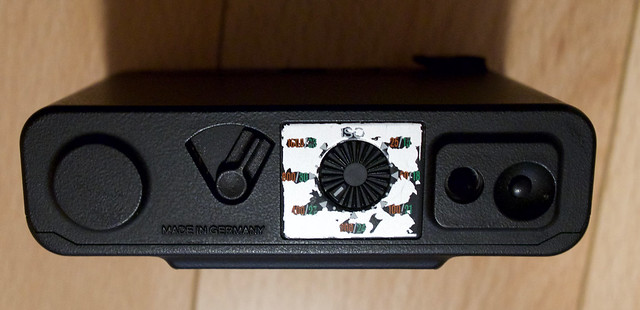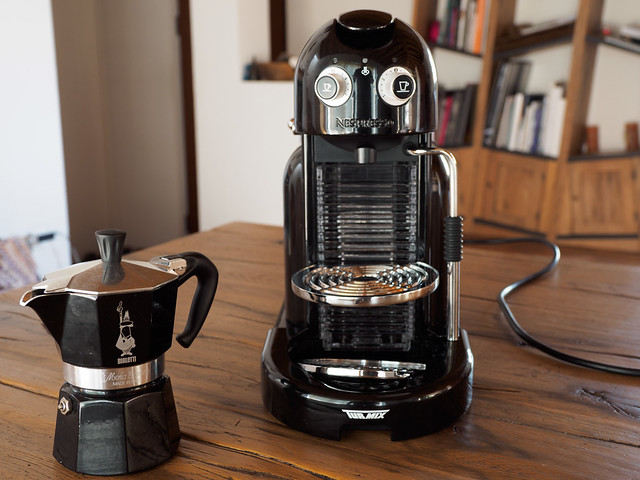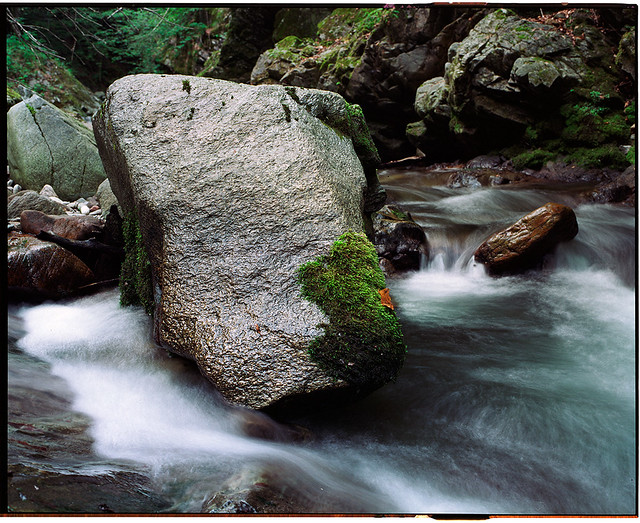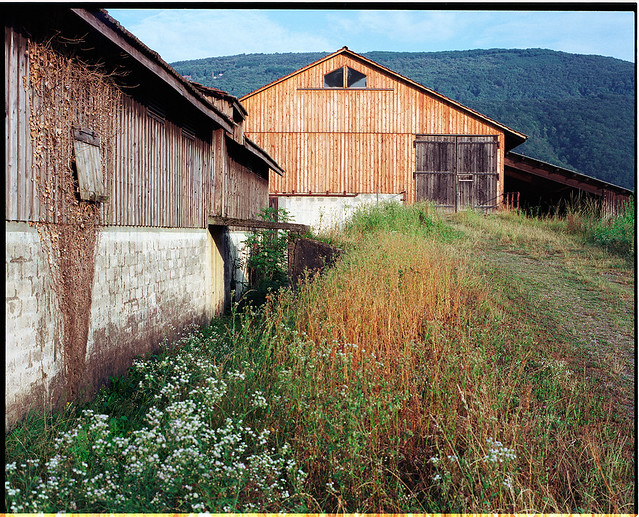I’m afraid this is going to be a bit of an unstructured ramble. Basically I’m just taking to myself: because I’m thinking about finally cutting the cord and giving up film. And then again, maybe not. I’ve changed my mind at least three times since I started writing this post.
Analog or Digital? Coffee, or convenience?
I’ve been using film since I started taking photographs, which was A Very Long Time ago, and although I have fully embraced digital photography, I have always owned film cameras, and at present I own quite a lot. In the last two years or so, in terms of time (and indeed money) invested, I’ve spent much more on film than digital. Could it finally be time to stop?
For me the choice between film and digital is largely emotional. To some extent those emotions are directly related to the end result: for example, the initial impact of a slide frame on a light table is much more visceral than that of a Raw digital file displayed on a computer screen. But otherwise they are mainly secondary things like nostalgia, or an appreciation of fine mechanics. More specifically I’d be sad to give up my Hasselblad XPan, which has been a companion on countless adventures for nearly 20 years, but then again, I’m beginning to feel it is dragging me down.
Film and digital have very different workflows. With film, it mostly happens in the camera, especially when the camera is fully mechanical. There’s plenty to get right which can’t be fixed later, and even when this stuff becomes second nature, it never becomes trivial. You choose your film, you set the exposure, and you’re pretty much committed. With digital, on the other hand, the work tends to start after the capture. There is so much latitude for change that it is dangerously easy to lose sight of any initial intention. Of course the distinction isn’t that clear: with film, the whole clunky process of scanning is a huge time-sink, and with digital, if you’re brave, you can go the JPG route and do everything in-camera.
Film is expensive. The cost of the actual film itself is constantly increasing, as is that of lab processing (I won’t find time in this life to do my own processing - although more on that later). The availability of film stock is still decreasing, especially the kind I like. Of course there are hundreds of minor variations of the same black and white film on the market, but that’s not my thing. Good film scanners are expensive are approaching extinction. And although you can certainly pick up a good used 35mm SLR for not very much, the kind of camera that makes using film worthwhile in 2018 is still actually pretty expensive. And when you buy it it will break down and nobody can fix it.
Of course digital is expensive as well. In fact it can easily become unreachable (although film holds its own if you consider the price of an Hasselblad X5 film scanner). And digital still pushes you towards the upgrade treadmill. And in terms of process, digital proposes the double-edged blade of near-endless processing choice.
It is so easy to get lost in these discussions which superficially appear to be philosophical but basically are just about the old demon gear. That demon which is dedicated to distract and prevent you from actually achieving anything photographically interesting. I’m feeling weighed down with gear, weighed down with choices, endlessly trying things out and testing approaches but never actually defining and realising an artistic objective. On the other hand I’m inspired by my Linhof 612, I’m emotionally connected to my Hasselblad XPan, and I think the frames my Bessa 667 produces are awesome. But then again, when I switch personalities and pick up my Olympus E-M5 I feel pretty happy with that, too.
Although do I? Actually it depends. For the urban landscape stuff I do, I really cannot complain at all. Yes, out of the box Portra 400 from the Bessa 667 is prettier, but, one, I can tweak Olympus files to something quite close enough to Portra, and, two, the Bessa 667 is fine until you want a focal length different to 50mm equivalent. However for classic landscape the Olympus files have some clear limitations. Far field objects tend to turn to mush, and the whole image can have a faintly plasticky field. This impression has actually been confirmed to me by several professional photographers I know who use Olympus. The system has many attractions, but also some drawbacks, and while you can most certainly use it to take excellent landscape photographs, if you have the artistic ability (which I’m not claiming I do), it isn’t perhaps the ideal choice.
I’ve tried to find a workaround to this by supplementing my Olympus with Sigma Foveon cameras, but astonishing as they can be in their ideal environment, that ideal environment is very, very restricted. And the lenses for the sd Quattro cameras are very heavy and bulky, albeit excellent. On the other hand, as objects, Sigma cameras are absolutely beautifully made, and the menu system is also the best I’ve seen.
The thing is, I don’t really have a need for film. I like using it, I like the way it looks, but there nothing enabling for me about film. My main, indeed only reason for persisting with film from around 2003 to 2013 was that I needed it to put in the XPan. But then I started expanding my repertoire a bit. And now I’ve maybe expanded it too much. Experimenting isn’t a bad thing, but there’s a thing line between experimenting and just f***ing around, and I’m afraid I crossed it some time ago.
And then again. My eyes keep getting drawn back again to recent shots I’ve taken with Provia 100F and Pro 160NS, and then, to others taken with the Olympus. And impressive as the Olympus shots are - and frankly, whatever Micro Four Thirds keyboard warrior detractors may say, they are impressive - there is something lacking. Of course, it could be as much down to medium format lenses as the films, but more probably it is a combination of both. Also looking around a bit, personally I find the film-only landscape work of Jake Horn to be a pretty convincing argument, as is my friend Jean Heintz’s view on film.
Then there’s the tempting idea that it is possible to replicate the colour of film in digital. I’ve had reasonable success with things like modified VCSO presets, and Exposure X3, and I’m trying out Mastin Labs’ products, but even if these were fully successful in replicating film, which, frankly, they’re not, quite, they still can’t make a digital Micro Four Thirds camera draw like a 6x7 Medium Format film camera. And to be fair, the reverse also applies, which let’s not forget, was a strong reason why so many scrambled to abandon film the moment that digital became affordable.
Trying to sift some clarity from my ramblings, What I think I’m tangentially approach is a wish for an interchangeable-lens camera that provides significantly more detail than the Olympus, gives me the lucid transparency and smooth, subtle tones of Medium Format Portra or Provia, is not too heavy or bulky, and is, within reason, affordable. It also needs to avoid over-complexity and feature glut - really all I need is aperture, speed, sensitivity and autofocus. I don’t need movies, I don’t need more than 1 frame per second - if not per minute. And then I want it to last forever, and keep me from being distracted by new toys. Until quite recently I really don’t think there was anything on the market that met that description. Now, in the digital world, there are maybe two candidates. Well, possibly only one. In the film world, an outsider might be the Pentax 645, a camera I’ve always admired from a distance, but it is heavy and bulky. If I forego autofocus, I guess there is the Hasselblad V series (again, I’ve often day dreamed about a 503cw), or at a stretch the Mamiya 7. All of these three of course are significantly different formats.
But what I really want is to escape from this endless chasing after gear and get down to doing some photography that really satisfies me. And for that, I really, really need to come down on one side or the other. I’m not actually labouring under any illusions that I will produce anything of any artistic or creative merit - I haven’t done so far, and after 30 years of trying, I doubt that will change - but at least I’d be enjoying myself.
** on film processing: actually, I may well end up dabbling in this. I backed the Ars Imago Film Box on Kickstarter, and unlike most of everything else I’ve backed (FilmLab, Ferrania…) it might actually deliver. There is also the intriguing Filmomat, but it is very expensive, and finally, the people behind the (late, undelivered) Kickstarter Reflex film camera claim they are going to produce an automated home C41/E6 processing lab for $500. I’m afraid I’m very skeptical, but that would shift some parameters…

